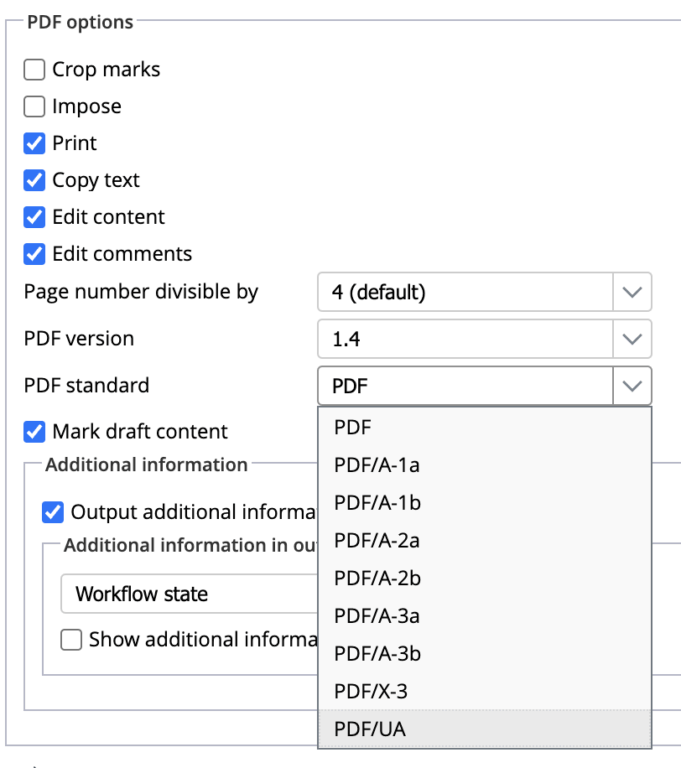
Accessible documentation made easy

With version 4.11, the XML-based authoring system Smart Media Creator (SMC) marks a significant milestone in the creation of accessible documentation. Companies can now produce HTML and PDF publications that comply with the Web Content Accessibility Guidelines (WCAG) and thus also meet the legal requirements of the Accessibility Enhancement Act (BFSG). These requirements must be implemented by many companies and organizations as of June 2025.
Accessibility Enhancement Act: Requirements for Products and Services
The Accessibility Enhancement Act (BFSG) obliges manufacturers and providers to consistently integrate accessibility into their processes—from development to delivery. With the regulation implementing the BFSG, Germany fulfills the EU requirements of the European Accessibility Act (EAA) and sends a strong signal for inclusion and equal opportunities.
What does this specifically mean for products and services?
- Multi-channel communication: Every function must be usable via multiple sensory channels—for example, content can not only be read but also read aloud.
- Individually adjustable visual elements: Users must be able to adjust size, brightness, and contrast. Alternative color schemes are also required.
- Adjustable audio outputs: Users should be able to regulate the volume individually.
- User-friendly control: Products must be designed so they can be operated even with limited fine motor skills.
These requirements show that accessibility is not only a legal obligation but also an opportunity to make products and services better and more inclusive.
Accessibility for Everyone – Everywhere
The accessible outputs of the CCMS (Component Content Management System) SMC are specifically designed to make content accessible to people with disabilities, such as those with visual impairments or motor limitations. Screen readers can reliably read content aloud, and intuitive keyboard navigation enables simple use—even without a mouse.
In addition, SMC automates the semantic structuring of texts, images, tables, headings, and lists. This significantly reduces the workload of editorial teams and ensures standardized accessibility. Alternative texts for images can also be easily added, allowing screen readers to interpret them without difficulty.
Why Accessibility Matters in Industrial Contexts
Accessibility is not only crucial for people with disabilities but also plays a central role in industrial environments. Employees often face special challenges here:
- Noise in production: In loud environments, content delivered by screen readers or audio output devices can be helpful.
- Restricted mobility due to protective clothing: Gloves or protective equipment often make it difficult to use touchscreens or small control elements. Optimized keyboard navigation is a major advantage here.
- Difficult lighting conditions: Glare, poor lighting, or reflections can impair visibility on monitors. Clear, high-contrast design and the option of audio alternatives are essential.
- Complex working environments: When fast and precise navigation in documents is required, structured content with semantic tags, bookmarks, and tables of contents ensures greater efficiency.
What Editorial Teams Should Keep in Mind
Even though SMC automates many tasks, the editorial team remains a central factor in creating accessible content. The following aspects should be given special consideration:
- Plain language: Texts should be written in a way that is easy to understand, ensuring accessibility for all user groups.
- High contrast ratio: A clear distinction between text and background colors is particularly important for people with limited vision.
- Color design for color vision deficiencies: Color choices and combinations should remain clearly recognizable for users with red-green color blindness or other color vision impairments.
- Clear structuring: Logically structured documents make orientation and navigation easier.
Another Step Toward the Future of Documentation
With version 4.11 of the CCMS Smart Media Creator, companies can not only meet legal requirements but also optimize the user experience—whether in the office, working from home, or on the shop floor. These new functions underline our goal of developing innovative solutions that make documentation accessible and usable for everyone.
Need more information? Go to the contact form